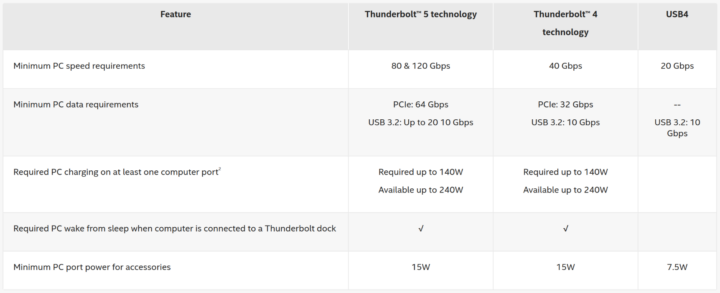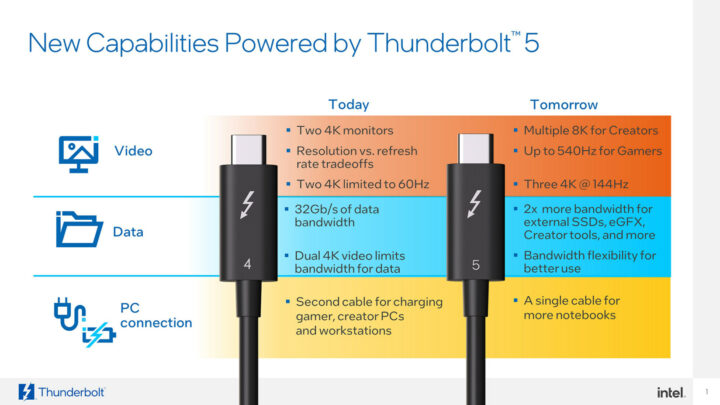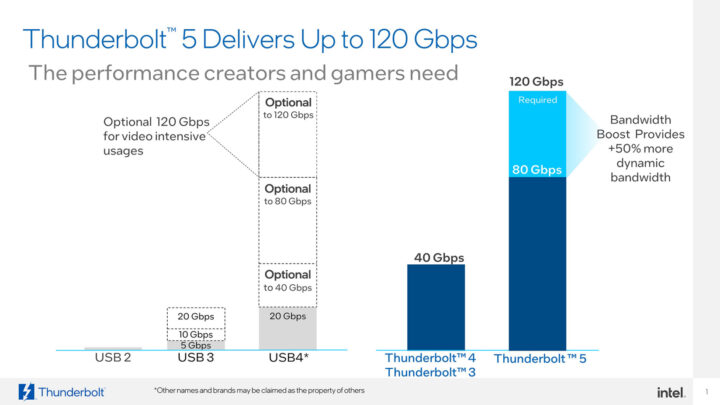Intel has just announced Thunderbolt 5 and demonstrated it with a prototype laptop and dock (see the video embedded at the end of this post) with up to 120 Gbps bandwidth when using “Bandwidth Boost”.
Thunderbolt 5 will deliver 80 gigabits per second (Gbps) of bi-directional bandwidth and the top 120 Gbps bandwidth is achieved through “Bandwidth Boost” to support multiple 8K monitors, which means three times the bandwidth of Thunderbolt 4 topping at 40 Gbps.
Thunderbolt 5 builds upon Thunderbolt 4 with several improvements and features:
- Two times the total bi-directional bandwidth, and up to three times (120 Gbps) for video-intensive usage
- Double the PCI Express data throughput for faster storage and external graphics.
- Compatible with USB4 V2, DisplayPort 2.1, and PCI Express Gen 4
- Double the bandwidth of Thunderbolt Networking for high-speed PC-to-PC connections.
- PAM-3 signaling technology to deliver increases in performance with today’s printed circuit boards, connectors, and passive cables up to 1 meter. (So the active cable needed to reach 80 Gbps in USB4 V2 might not be needed… TBC)
Intels says the new Thunderbolt 5 standard will deliver the bandwidth needed by content creators, gamers, and professionals. While Thunderbolt 4 can now be found in many mini PCs, I’m not convinced this will be the case for Thunderbolt 5 anytime soon, until the time when high-resolution 8K displays drop in price, although the need for faster storage and high-performance eGPU may also help drive the adoption of the new standard.

Having said that, Thunderbolt 5 should be found in premium PCs and laptops soon enough, as Intel’s controller, codenamed Barlow Ridge, is expected to be available starting in 2024.
Further information may be available on Intel’s press release and the product page.

Jean-Luc started CNX Software in 2010 as a part-time endeavor, before quitting his job as a software engineering manager, and starting to write daily news, and reviews full time later in 2011.
Support CNX Software! Donate via cryptocurrencies, become a Patron on Patreon, or purchase goods on Amazon or Aliexpress






